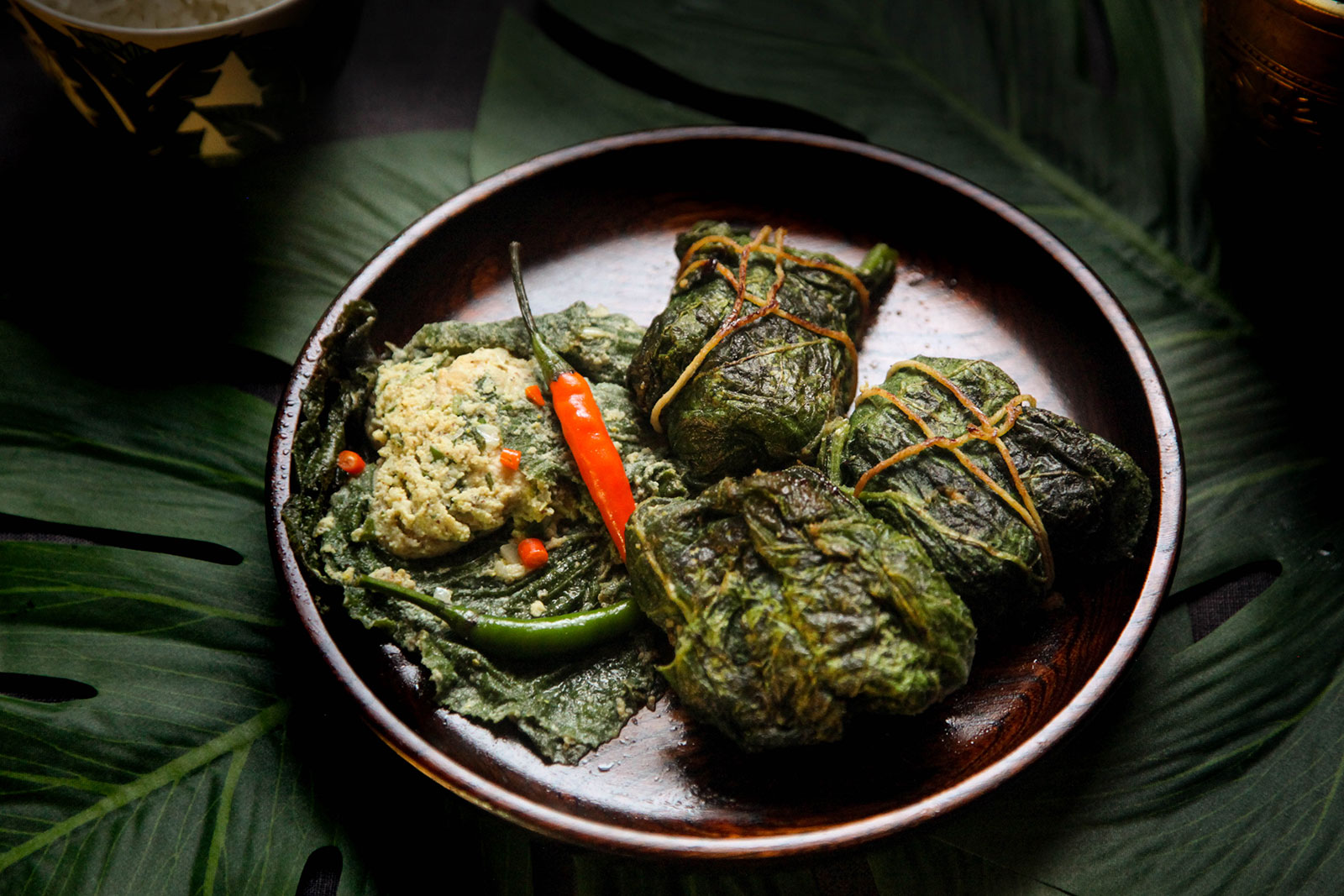Paturi – Chicken Parcels wrapped in Lau Squash Leaves (or collard greens)
Bangladeshi Paturi with Lau Pata & Chicken
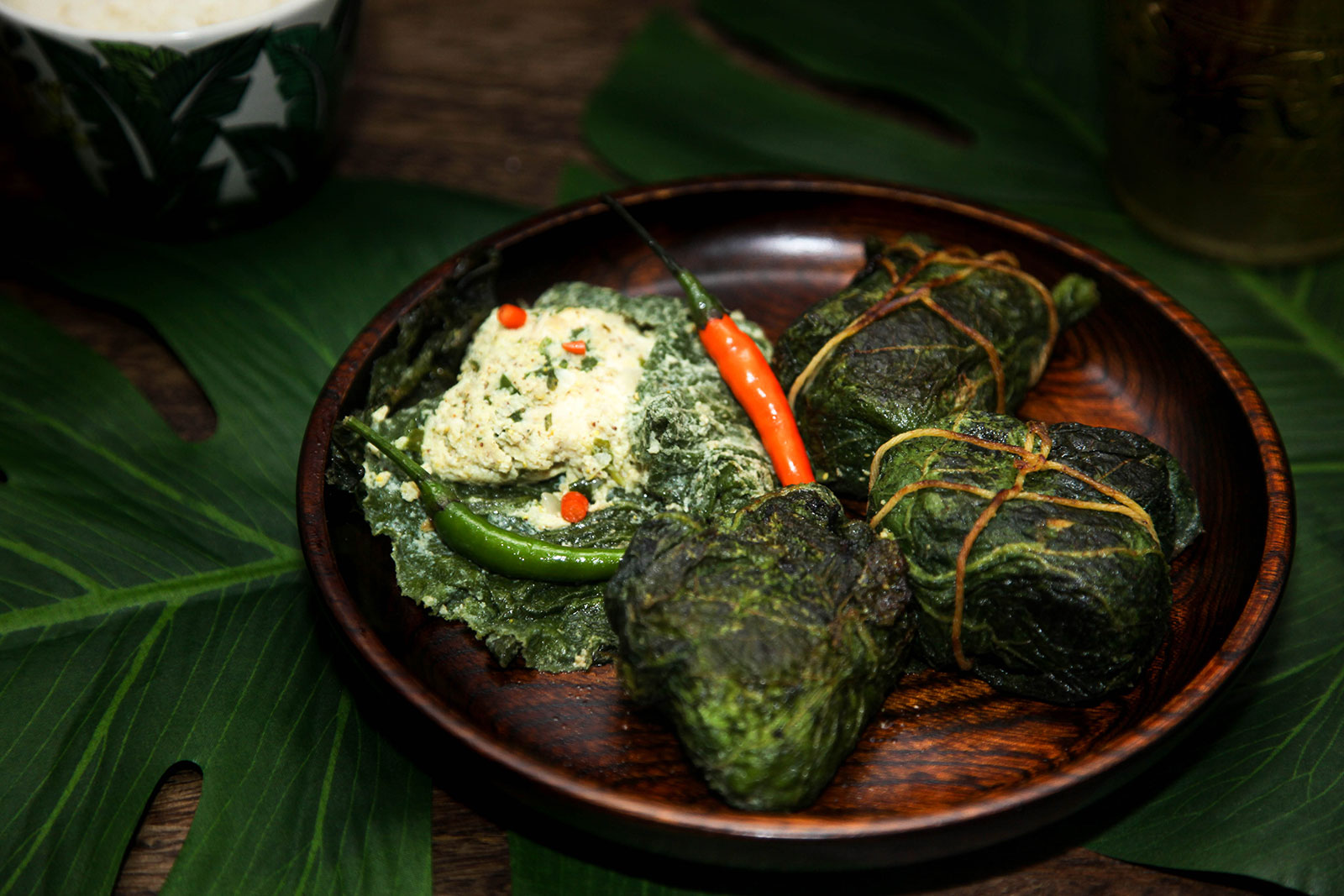
For a couple of years now I’ve been meaning to share my recipe for Paturi of chicken parcels wrapped in lau squash leaves, and am finally getting around to it. Traditionally in Bengal, Paturi is made with fish marinated in mustard paste, with the pieces of fish individually wrapped in leaves, resembling parcels. Some people use banana leaves as the wrapper, but since one can’t eat banana leaves that type of recipe results in basically steamed fish in my opinion. In our house, my mom would make paturi with lau pata (leaves from a type of squash plant called lau in Bengali) and use ilish fish (Bangladeshi hilsa fish). The way my mom made Paturi was delicious! First there was the crunch and unique flavor of the cooked lau pata in the mouth, followed by the sensation of soft steamed fish that had been marinated in creamy mustard sauce, and finally there was a bit of the zing from the mustard oil. All of it combined together to create an experience that was mouthwateringly good!
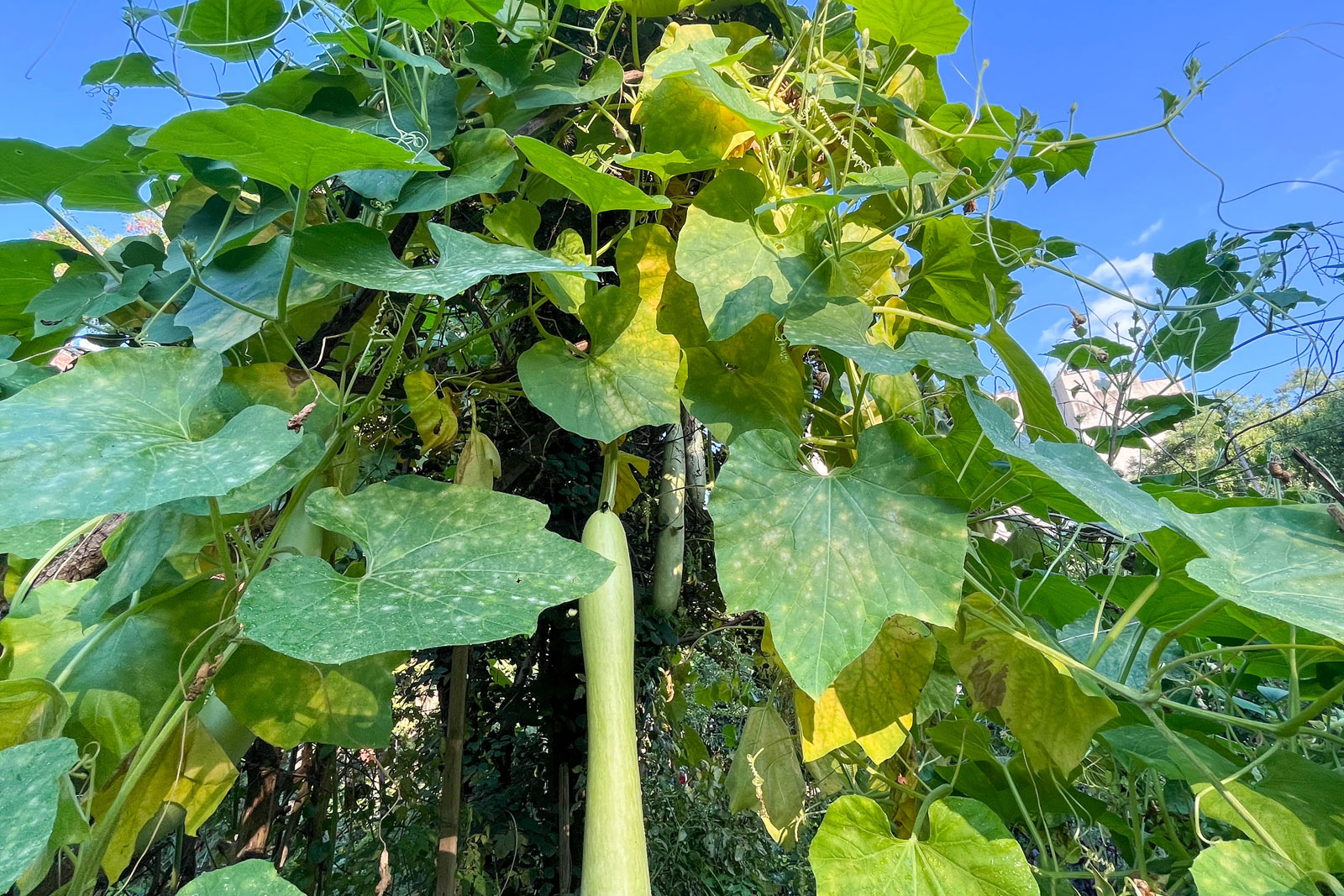
Lau, as I mentioned, is a type of squash or gourd – the English name is Bottle Gourd. It’s also known as calabash or long melon (most Bangladeshis refer to it as lau so I’ll use that term here, although in my family we called it kodu). The ripe vegetable is long and pale green on the outside, while the flesh inside is white and soft. The leaves or the “pata” (the Bengali word for leaf is “pata”) of the climbing vine-like plant are edible, and strangely delicious. And so paturi made with lau pata is just fantastic.
For years I missed eating paturi. No restaurant in NYC makes it. I could try making it, but the ingredients were very difficult to find. While frozen hilsa fish is available, it’s never tasted anything close to the fresh ilish in Bangladesh. And while I could substitute something else for the fish, more importantly, where would I find the lau leaves?
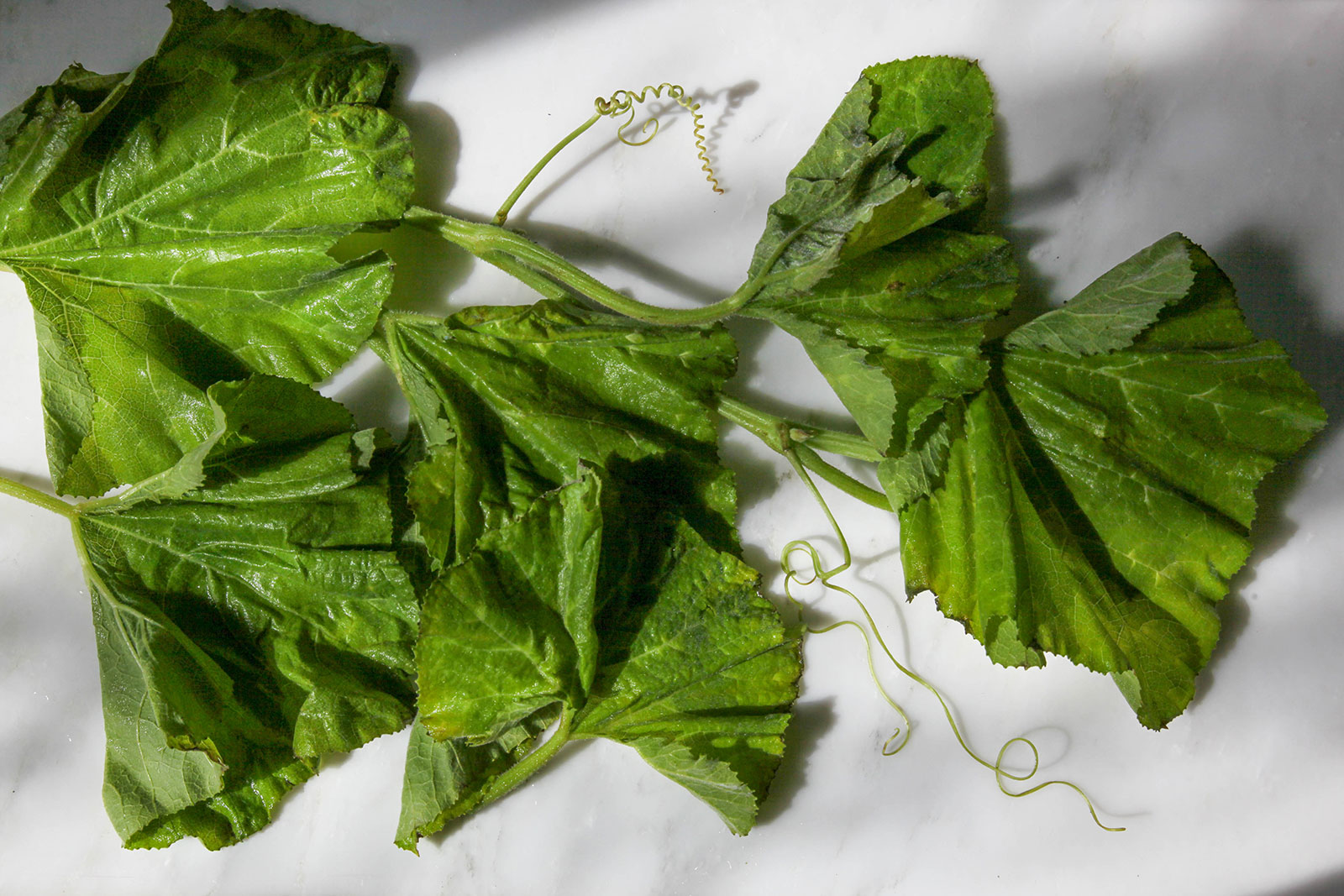
Although it’s possible to find lau in Bangladeshi and Indian grocery stores (and even in Chinatown) in New York City for most of the year, it’s harder to find the leaves. Some Bangladeshi stores do sell them in the latter part of the summer, but by the time you buy them they have been off the vine for a few days already. However, if you’re not growing lau in your vegetable garden and don’t have access to the fresh vines, the store-bought leaves suffice, and that’s what I have used the past few years. You’ll just have to cook them within the next day, before the leaves wilt and start browning.
Recently we went to Long Island to meet relatives visiting from Bangladesh, they were staying with their daughter there. Their son-in-law likes to garden and had planted a variety of Bangladeshi vegetables. I was especially excited to see lau growing on the impressive scaffolding he had constructed – the leaves were so vibrant and fresh! I told the son-in-law about paturi (he had never had it); he invited me to take as many leaves as I wanted, so I picked a few. The next day I made paturi of course, and this time I decided to take some photos and share the recipe here.
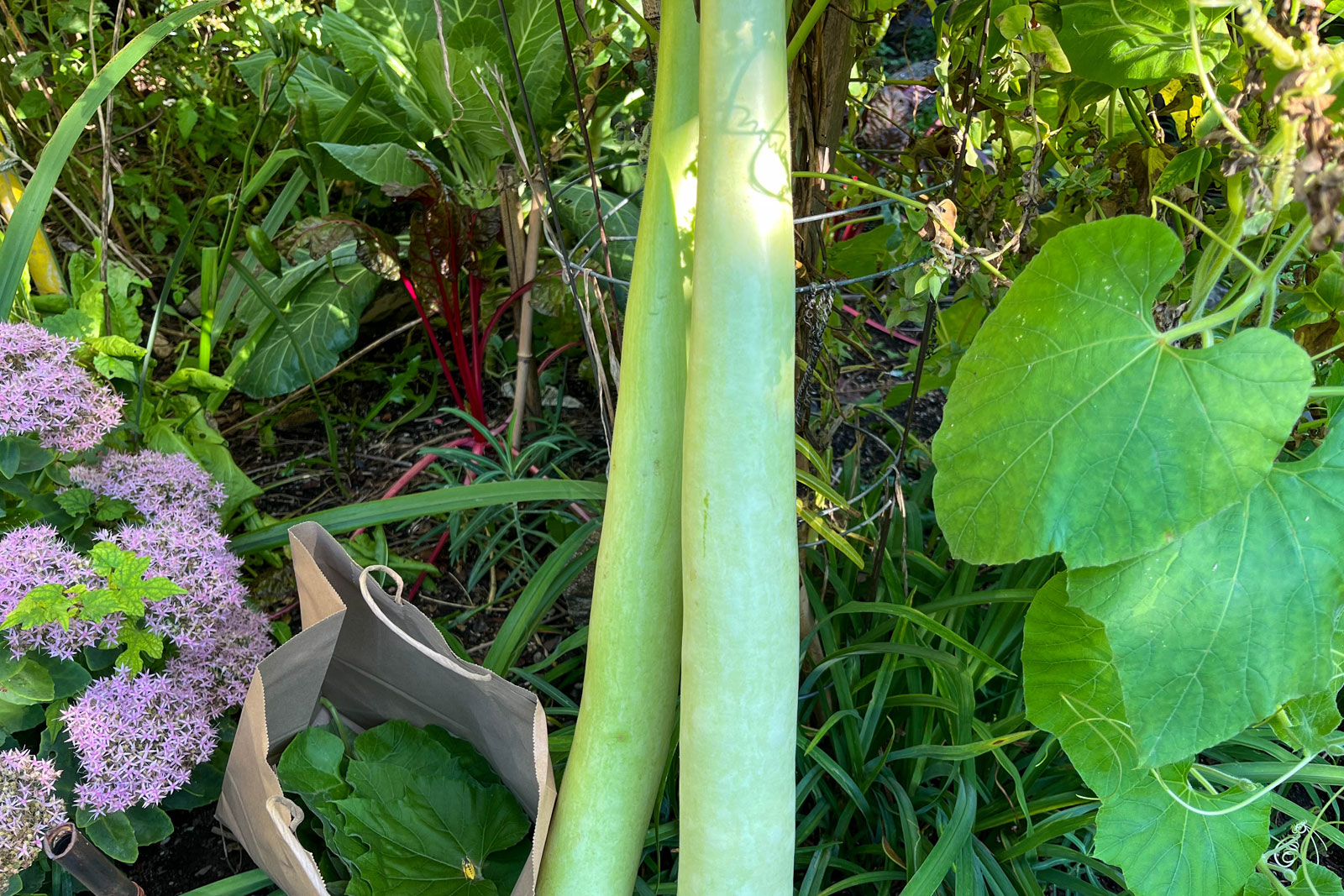
A couple of weeks passed however, and I hadn’t gotten around to the post. Then an odd thing happened. As I’ve mentioned in some other posts on my blog, I’m a member of a community garden in my neighborhood in Manhattan, where I have my own plot. One of my garden friends belongs to another community garden as well and I met up with her at her other garden. I was astounded to discover that she had a lau plant growing in her plot (she’s African American, with no Asian ethnic connection). The lau had initially climbed up a smallish tree, but in order to help it grow she and her fellow garden members had built it a support structure. Now there were several very long lau hanging from the vines. She insisted that I take a couple. I was more interested in the leaves, since I had already finished the paturi and would love to make more. She didn’t use the leaves at all, and I took a few. And we planned that I should go back again and get more before they fall off, now that Autumn is finally here.
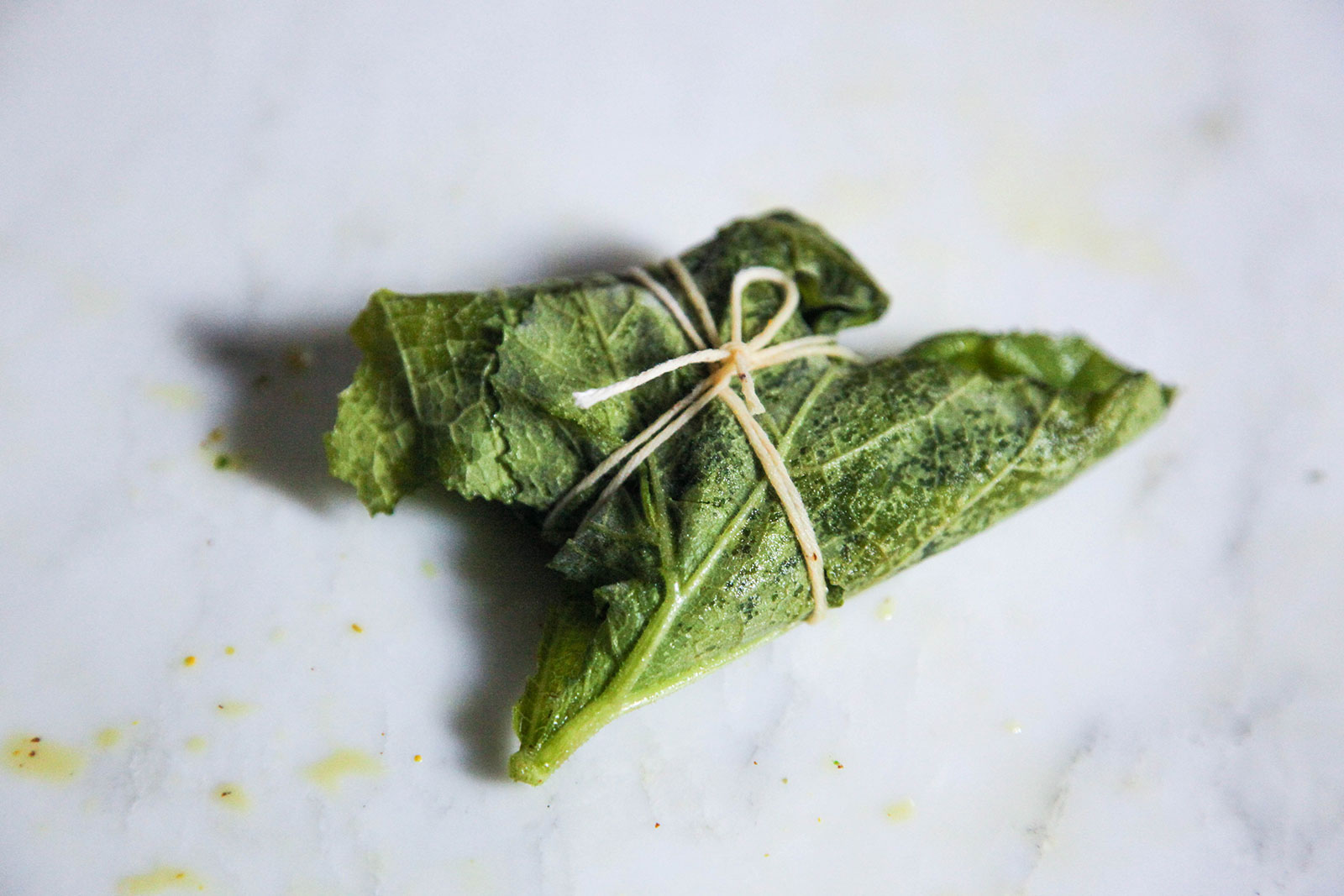
This lucky incident giving me regular access to fresh lau pata finally inspired me to share my paturi recipe. This is not the traditional Bangladeshi Paturi that I described at the beginning, nor is it my mom’s recipe. I don’t use fish in my version; I used my mom’s ilish paturi with lau pata as inspiration and decided to make my own version, albeit with chicken. While it’s not the same substituting chicken for ilish (kind of sacrilegious to even think of that), making chicken parcels with tasty edible leaves creates a mighty fine dish! Since I wanted to replicate as much of the traditional paturi taste and texture I used mustard paste, but added another twist by using a little bit of coconut milk and egg to the paste – this gives the end result a creamy texture (kind of like the soft creamy fish), which would otherwise be missing from just chicken pieces alone.
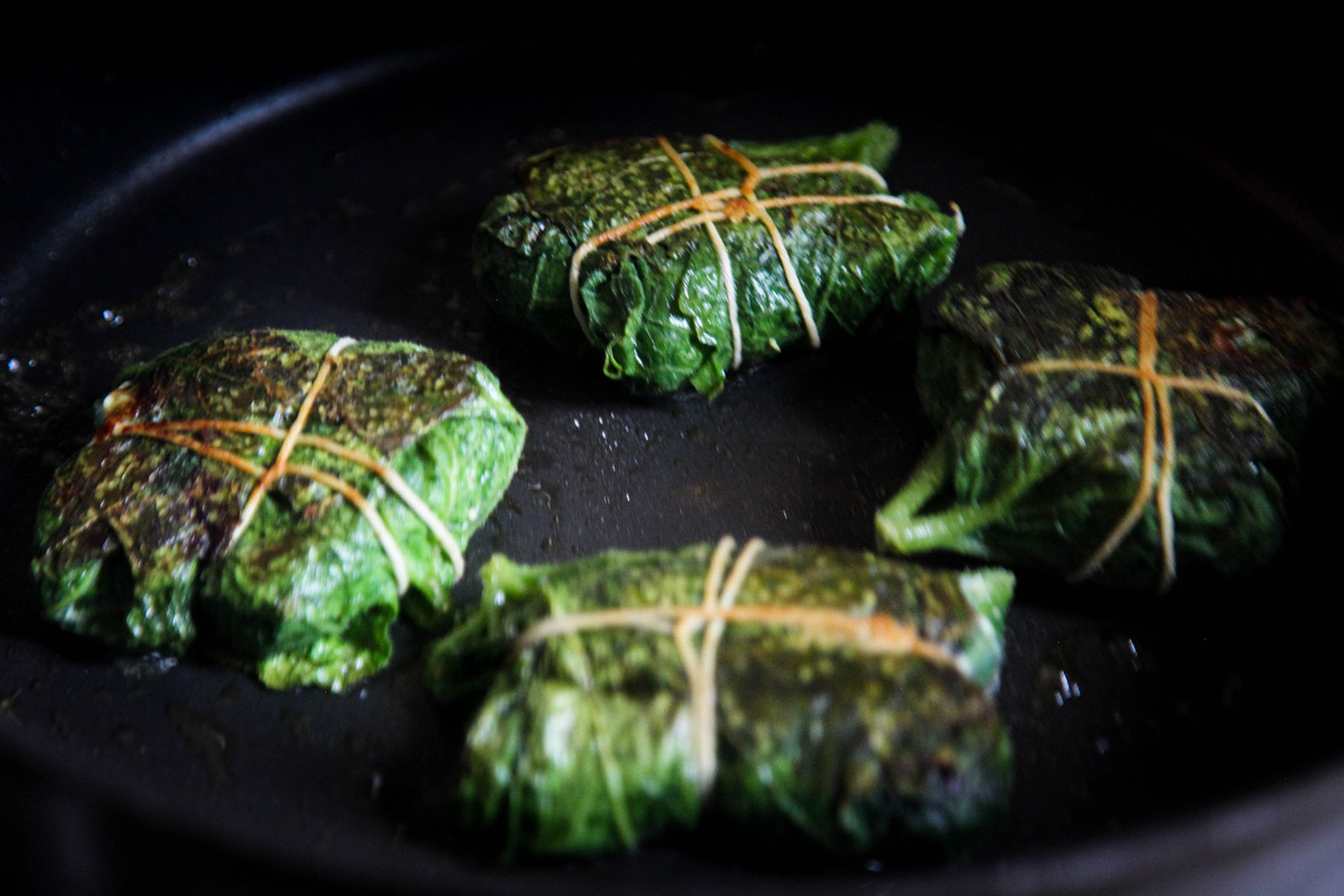
If you don’t have access to a lau plant or lau leaves, you can use leaves from other squash (gourd) plants. Squashes are in the Cucurbitaceae family. Leaves from most other plants in this family will work for this recipe – you can use zucchini leaves or pumpkin leaves. I have since made paturi with collard greens as well and that’s tasty too (collard greens are easily available in grocery stores making it an easy option). If you’re using big leaves, usually one leaf will suffice per chicken piece. When I’ve used store-bought leaves they are much smaller in size, and then I use two to three leaves to wrap around a chicken piece, holding it together with twine. The wrapped pieces of paturi look like pretty little gifts!
You can serve the paturi with white rice, or plain polau. You could add salad to complement the meal. While it takes effort to make paturi (wrapping the parcels does take time), if you make a large batch you’ll be thankful later, as you can freeze the cooked paturi parcels and they’ll last a few weeks in the freezer. It’s easy to take out a few parcels for a meal and make a fast weekday meal out of it (use the defrost setting on the microwave to re-heat, finishing off with dry heating briefly on the stovetop).

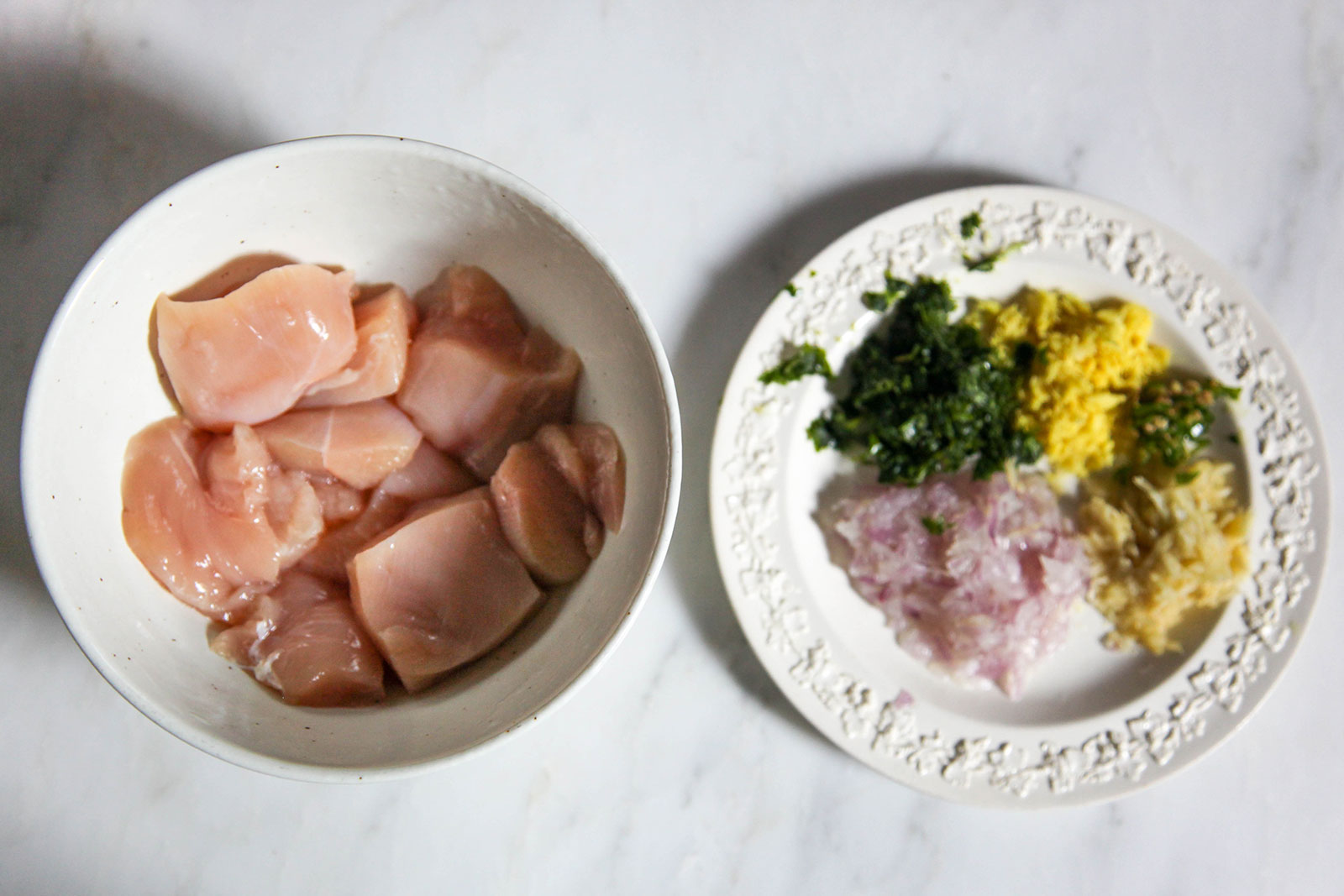
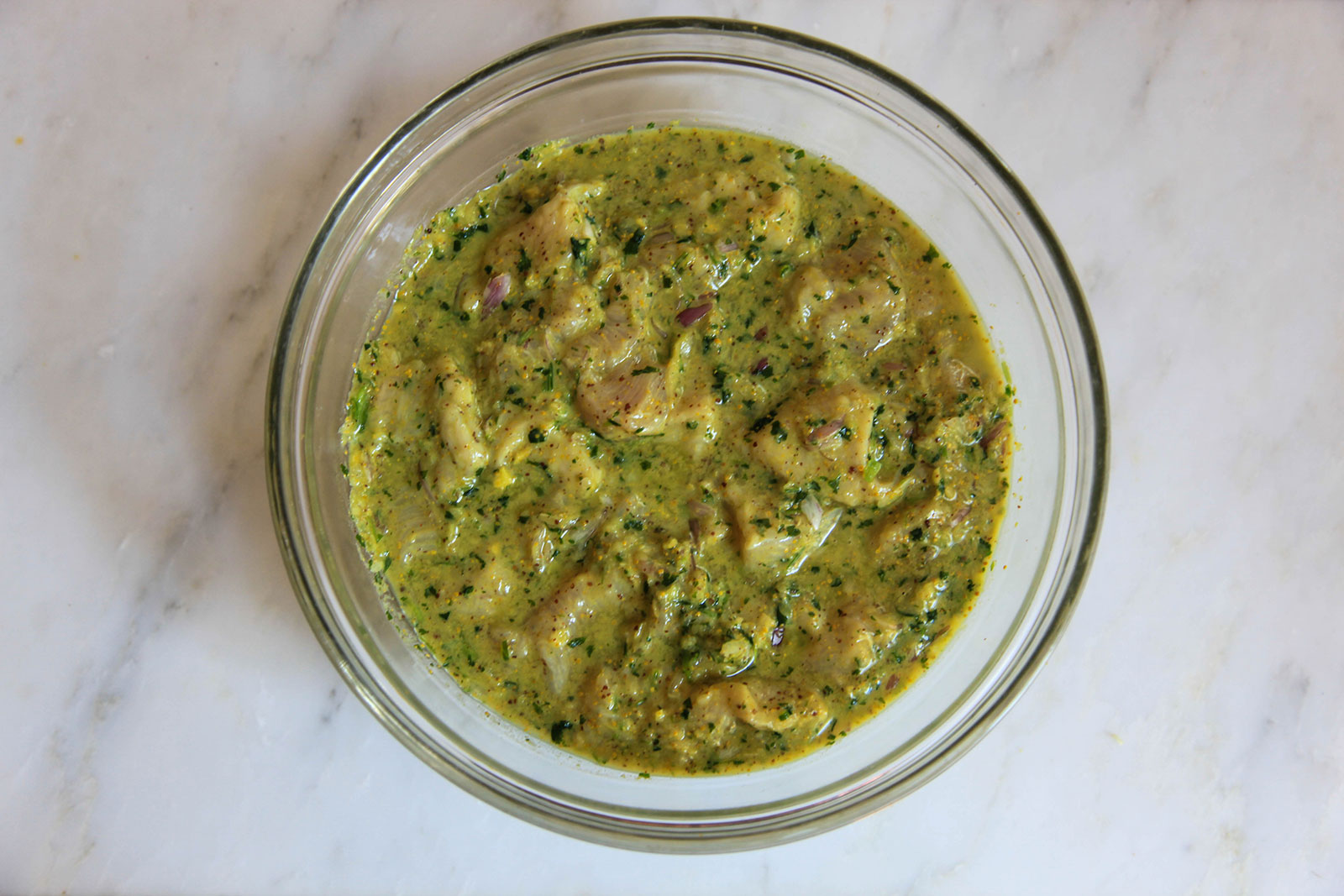
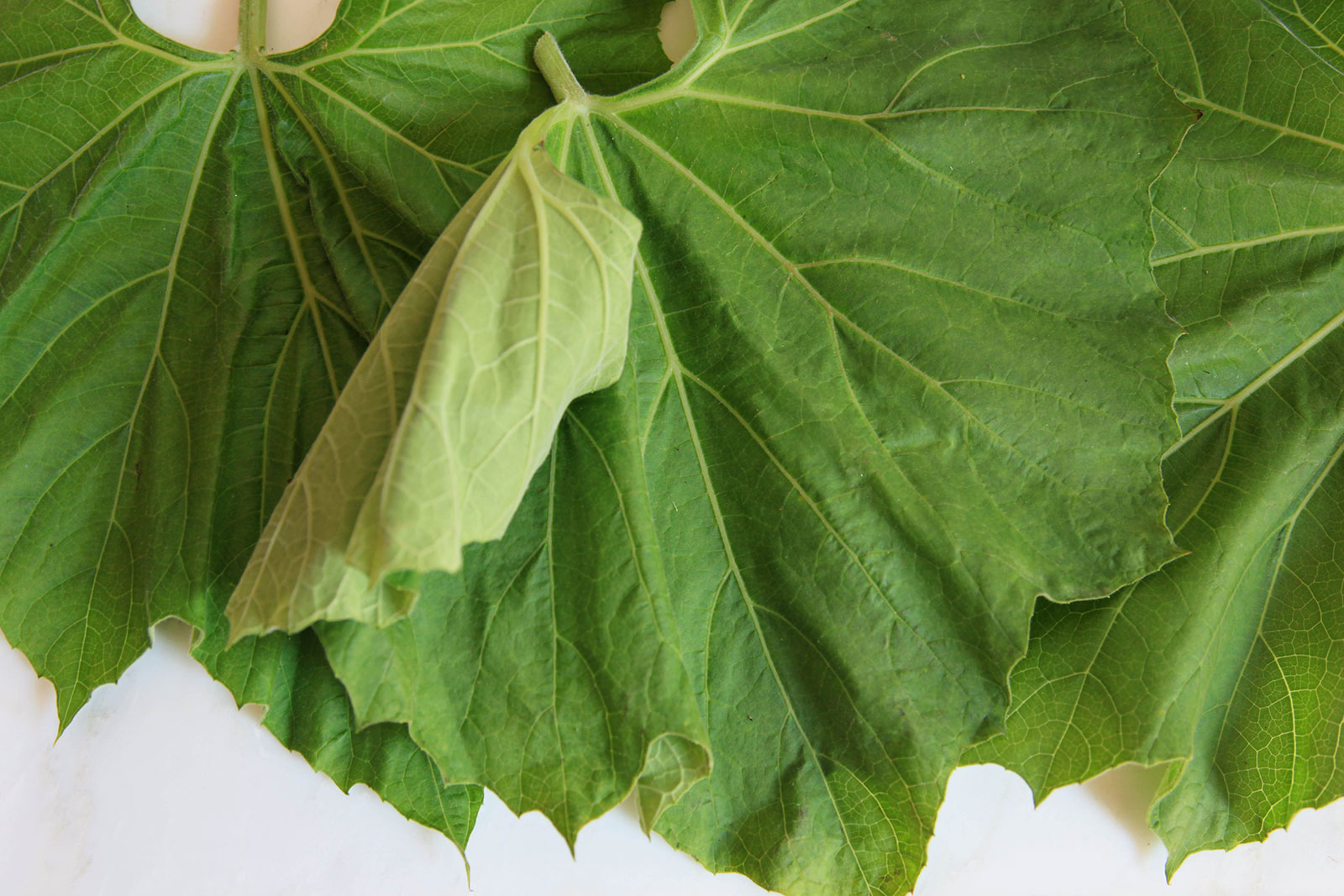


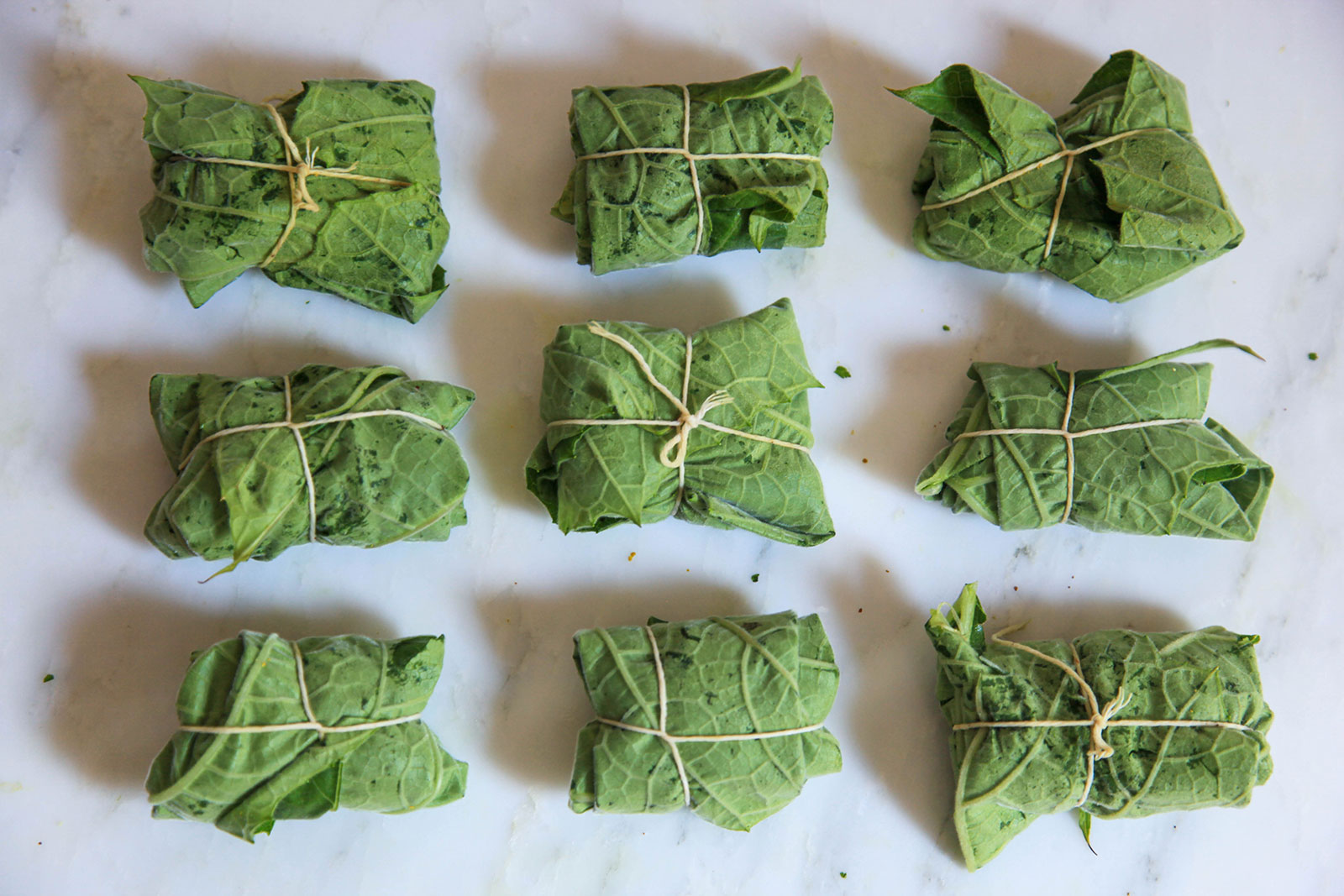
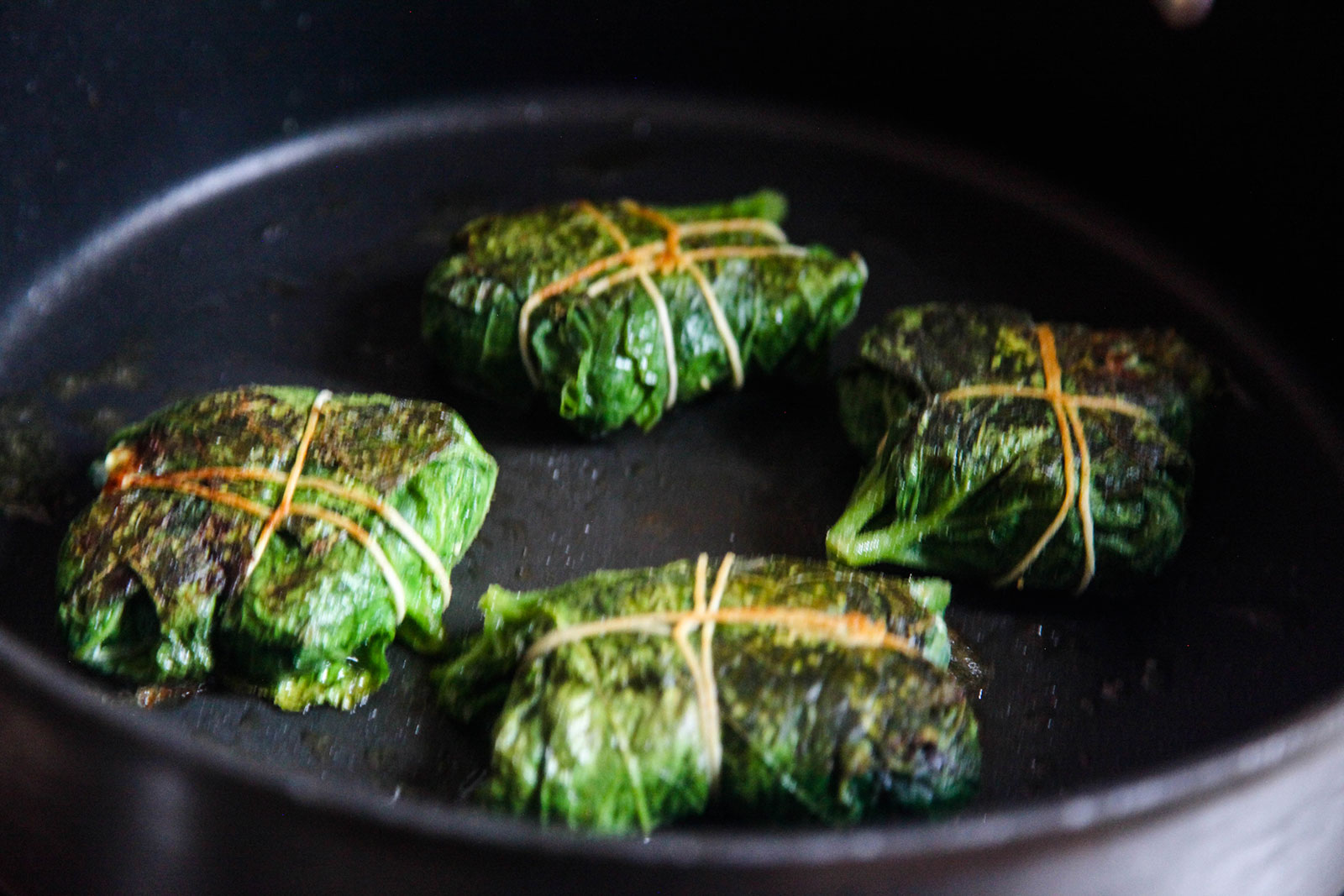
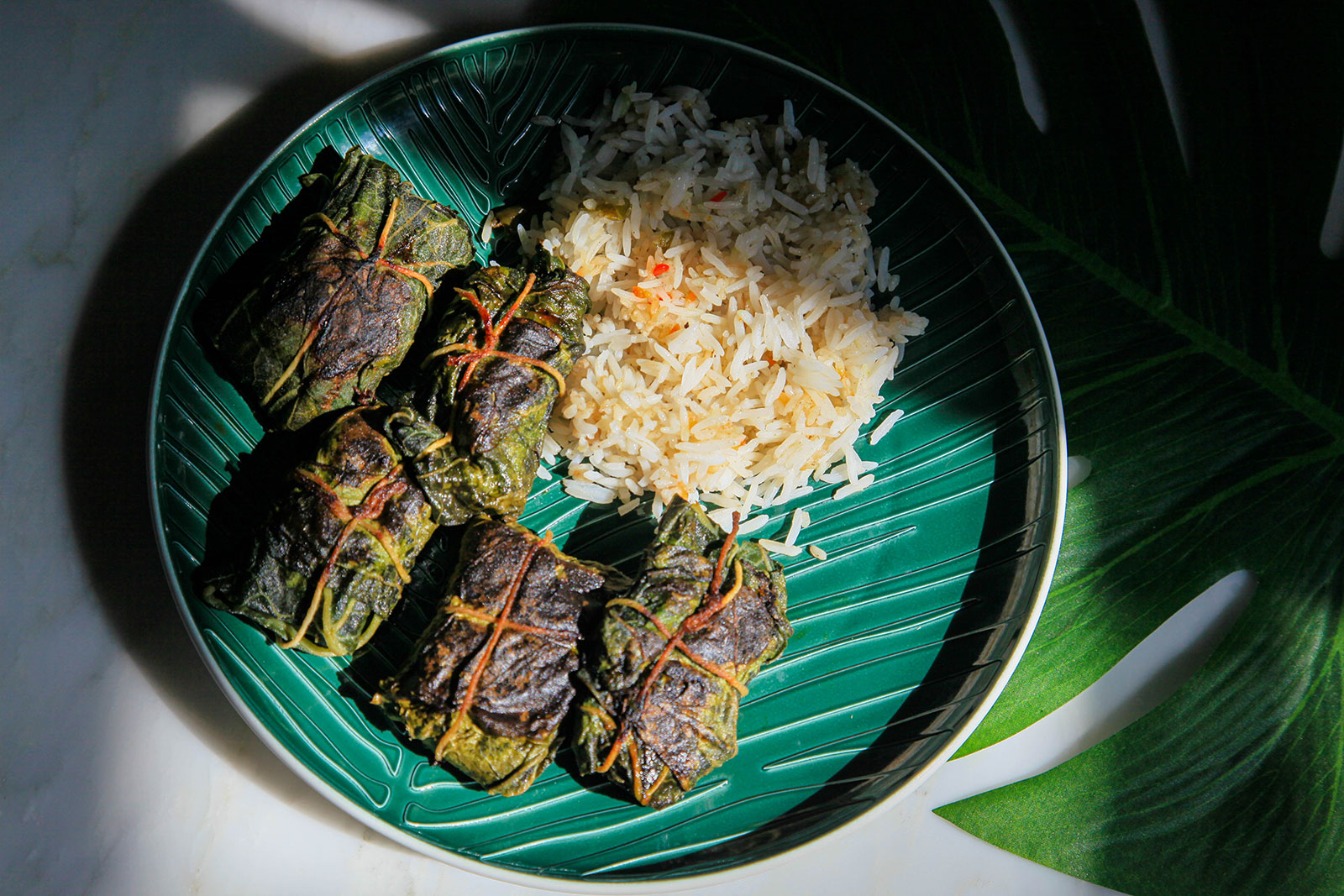
Paturi of Chicken Parcels wrapped in Squash Leaves
SERVES: 4 (approx. 20 pieces)
Chicken marinade
- 1 pound chicken breast, cut into cubes (about 1 inch square pieces)
- 2 medium shallots, pounded/blended into paste
- 1/2 head of garlic (approx. 6 large cloves), pounded/blended into paste
- 1 inch piece of ginger, pounded/blended into paste
- 4 tablespoons Dijon Mustard (or Bangladeshi kashundi)
- 4 teaspoons coconut paste from a can of coconut milk
- 2 eggs, beaten
- 1 tablespoon chopped cilantro
- 2 bird’s eye green chilies, chopped (de-seed them for less heat/spice)
- 1 teaspoon salt
Paturi wrapper
- 2 pounds lau (bottle gourd/calabash) leaves (or collard greens)
- 3 tablepoons (or more) mustard oil for brushing on leaves (mustard oil adds zing. If you don’t have mustard oil, you can use olive oil)
- 2-3 tablespoons olive oil for cooking
- Twine
METHOD
- Marinate the chicken pieces in ingredients listed in the marinade portion for 2-3 hours.
- In the last hour of the marinade time, start preparing the leaves for making the paturi. Remove the stems from the base of each lau leaf. Rinse the leaves thoroughly in cold water and drain in a colander. Be gentle while rinsing the leaves otherwise they can tear. In order for the leaves to not get soggy, I place them near a fan to dry (alternatively, you can pat them dry).
- Take a rinsed and dried leaf, and brush it lightly on both sides with mustard oil (or olive oil).
- Put a chicken piece in the leaf which has been brushed with mustard oil. Spoon a bit of the marinade paste on top (don’t put too much otherwise when you wrap into a parcel, the liquid will start oozing out).
- Fold the leaf around the chicken like a parcel, wrap and tie it with twine.
Note: If the leaves are small, use 2-3 leaves for one parcel so that it will hold together well (also it’s tastier to bite into layers of crunchy leaves).
- Continue the process till all the chicken pieces are wrapped into parcels.
- Put olive oil in a big flat pan. The oil should be just enough to brush the pan, and shouldn’t form a thick layer (you’re not going to be deep frying the paturi, they should not be oily or greasy). Heat the pan over medium heat.
- When the pan is hot (not too hot that it’s smoking), add the paturi parcels (if the pan isn’t big enough for all the paturi, fry in two batches). Cook for about 10-12 minutes on one side. Flip the parcels, cook for another 10-12 mins. The leaves should brown a bit, but make sure not to burn them.
- Remove from heat to a plate and let it cool a little bit. Then carefully cut the twine without damaging the leaves, and remove the twine.
- Serve and enjoy!
